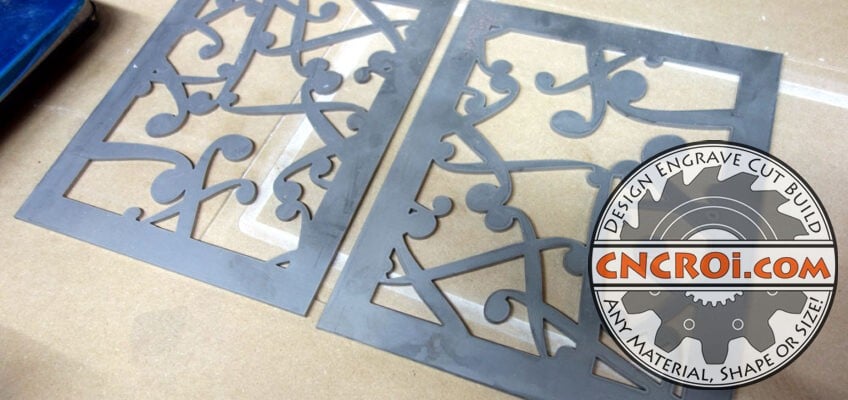Custom Metal Grills: 12 ga 304 Stainless Steel 2b
Let’s waterjet cut some custom metal grills using 304 stainless steel, with 2b finish that’s sanded after production.
There are many ways for CNCROi.com to cut out these custom metal grills but the waterjet was the best tool for this particular project.
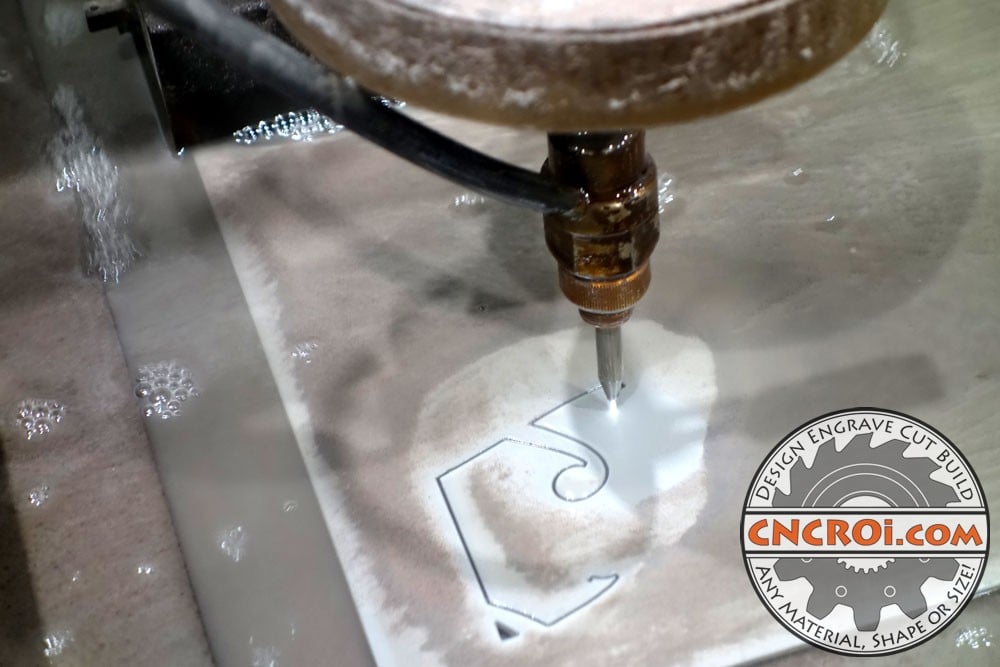
The advantage of waterjet cutting stainless steel is that it’s a cold cut process, meaning, there is no concern about any material warpage from the heat generated onto the sheet of custom metal grills.
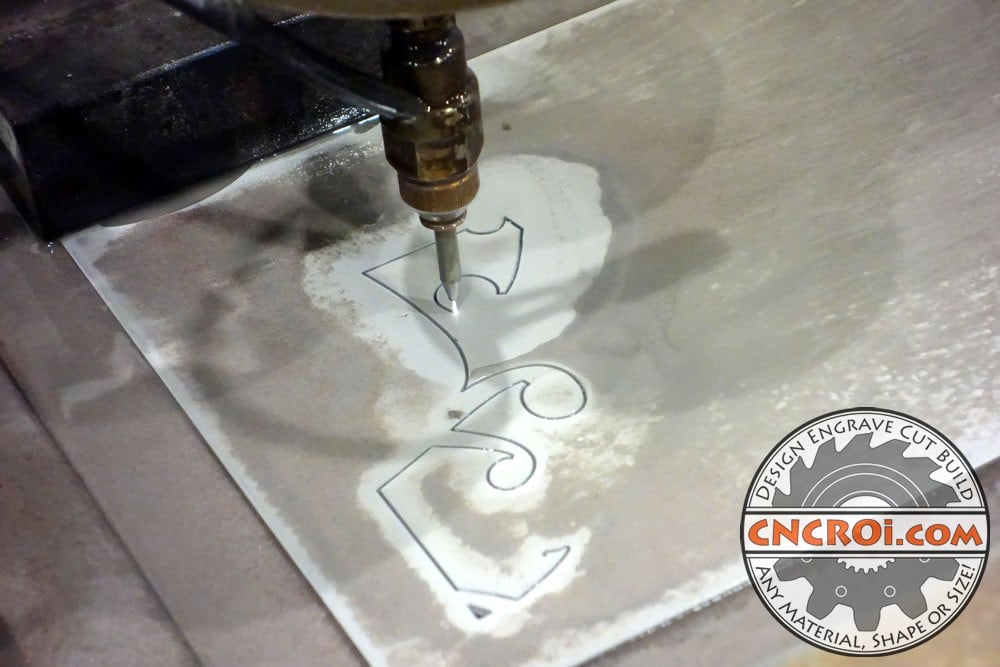
The reason why you see all this “sand” around the cutting area is because waterjet cutting actually has sand mixed-in with the water to actually cut the custom metal grills, no garnet, no cut.
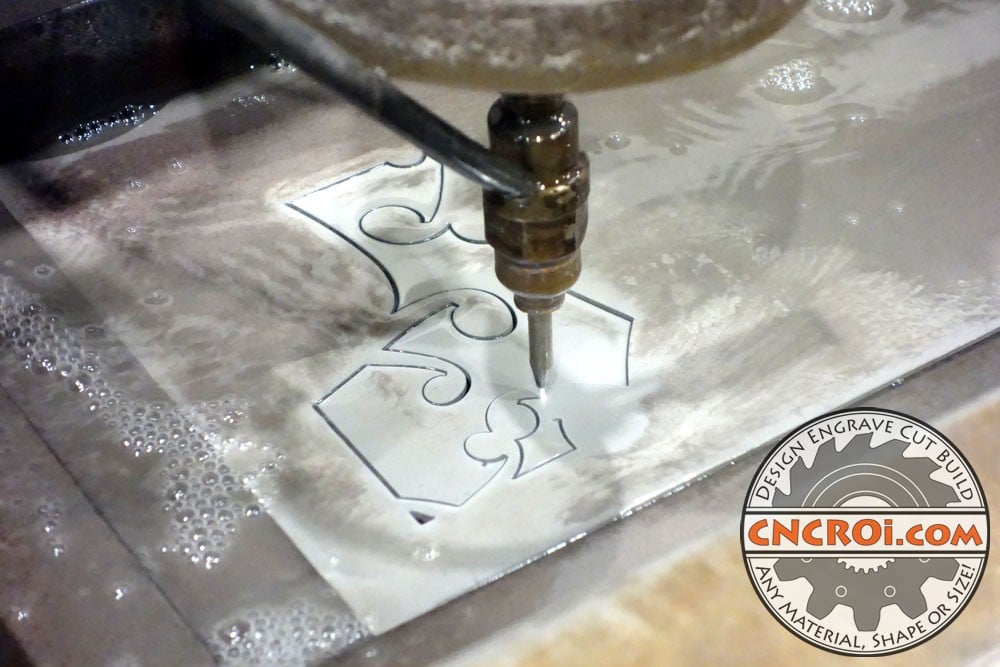
For something this small and finely detailed, heat wasn’t much of an issue but the edge quality was, plasma produces a rougher edge, laser a SHARP edge and the waterjet, a sanded edges on these custom metal grills.
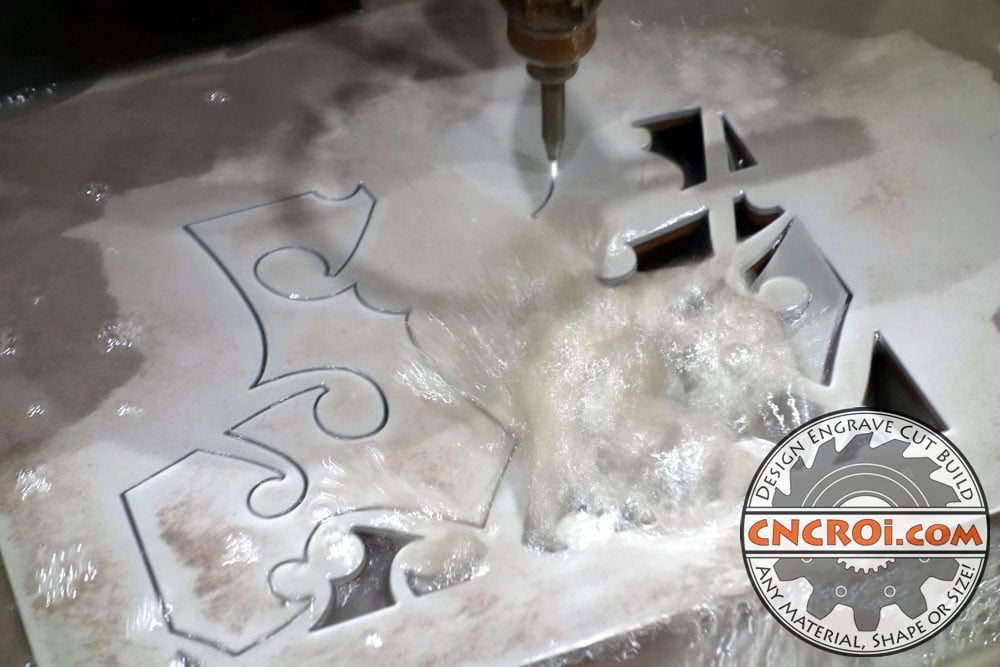
These custom metal grills have a really cool flowery design, blunting the edges of these would be a lot of work with my sand blaster, so using the waterjet did this while cutting it, all in one shot for CNCROi.com.
The piece of stainless steel you see in this video and photos is an offcut from the above project, you can see shape of the blades in the top of this sheet.
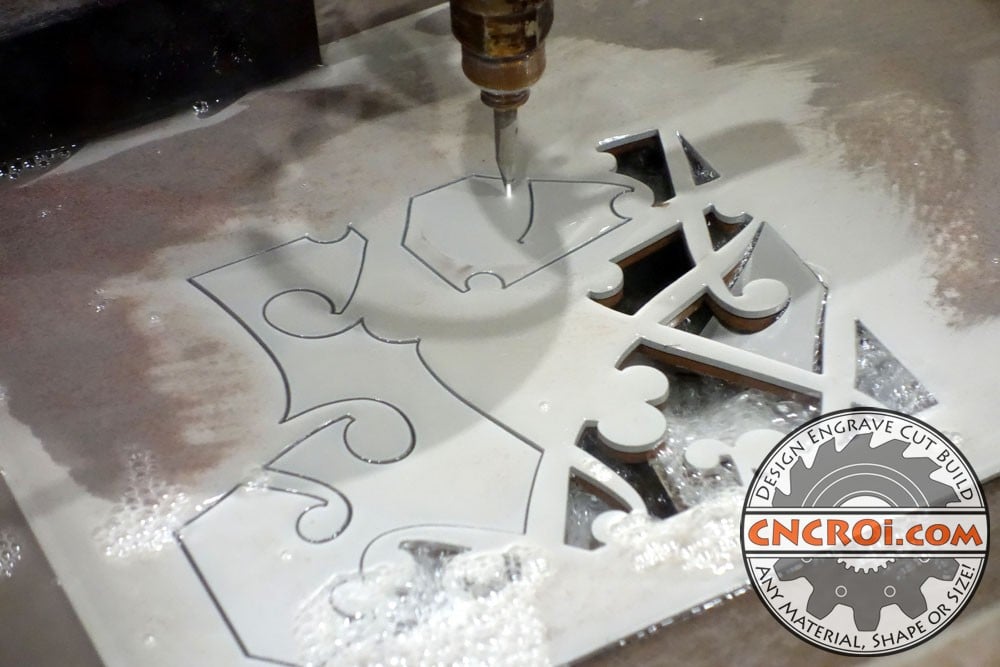
It may be obvious but waterjet cutting is a wet process, as such, not all materials work well with this cutting technology, if these custom metal grills were wood or even mild steel, I would have used another platform to cut these with.
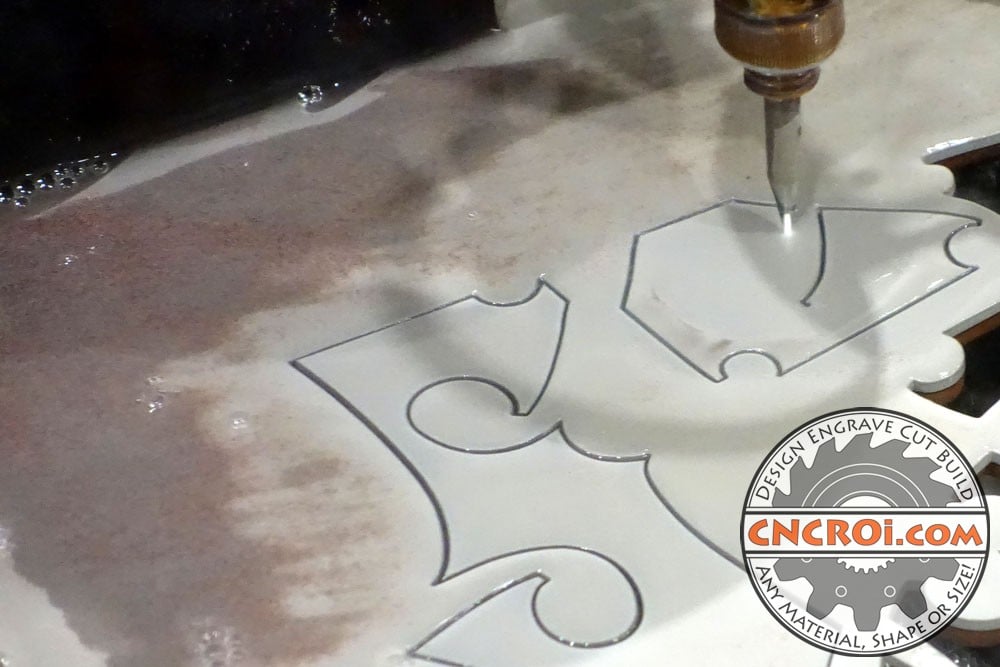
CNCROi.com has been cutting metal and other materials for over a decade now, from metal to plastic to wood and custom materials, having multiple CNC platforms allows us to optimize the results to the project, rather than trying to fit everything onto one platform that might not produce the best results possible.
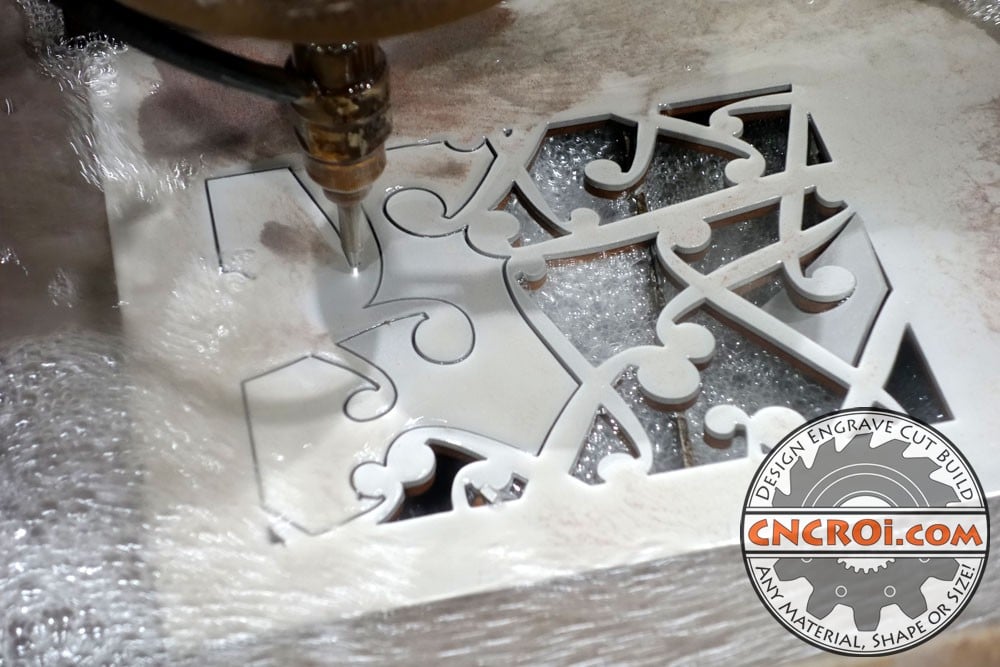
Unlike mild steel, waterjet cutting stainless steel doesn’t cause flash rusting, which then needs to be coated with something to prevent further rusting – that’s why if this was mild steel, I’d laser or plasma cut these custom metal grills instead.
Most of the waterjet related work we do is stencils with stainless steel, it’s a wonderful piece of equipment for these types of projects.
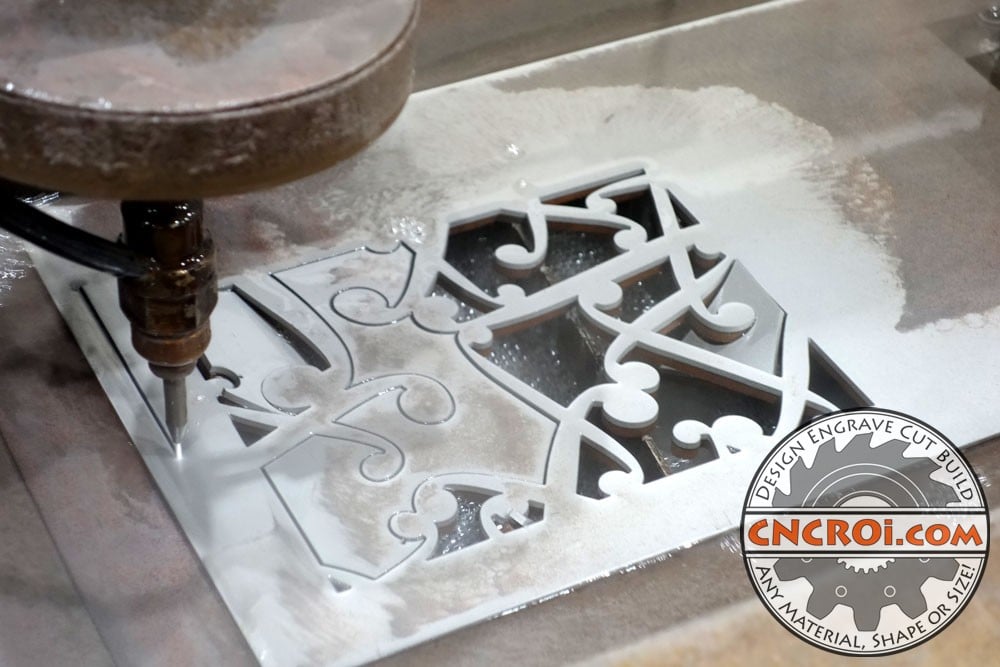
The major advantage of stainless steel is it’s corrosion resistance, but another thing that isn’t fully appreciated is that it’s easy to fix scratches and the like on it, depending on the depth.
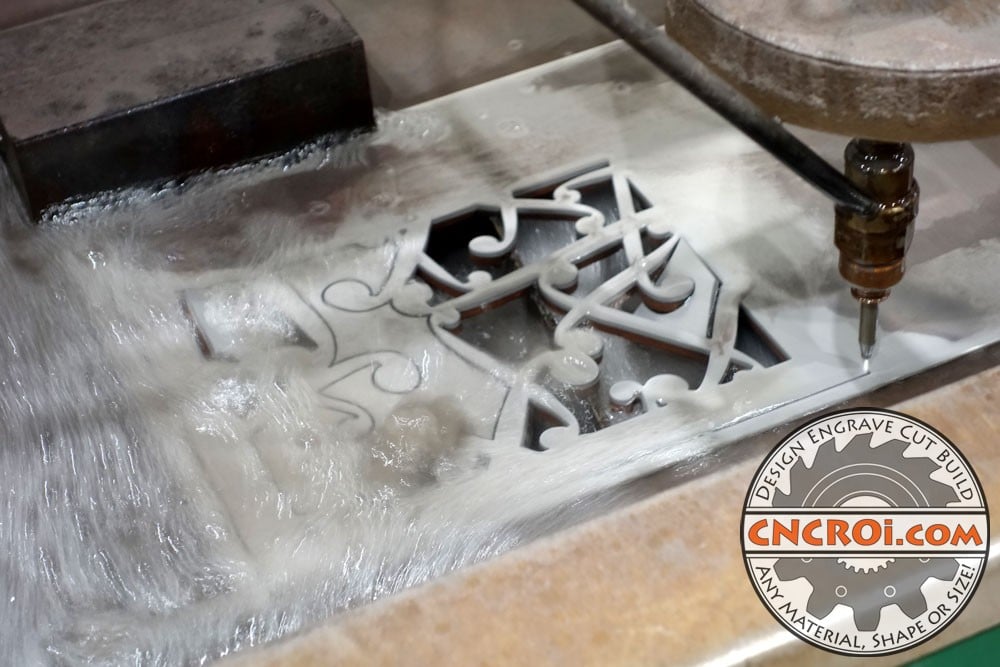
I used an orbital sander at CNCROi.com to both dull and add aesthetics to the custom metal grills, this makes it NOT a fingerprint magnet but also makes sanding away (blending) scratches should they happpen easy.
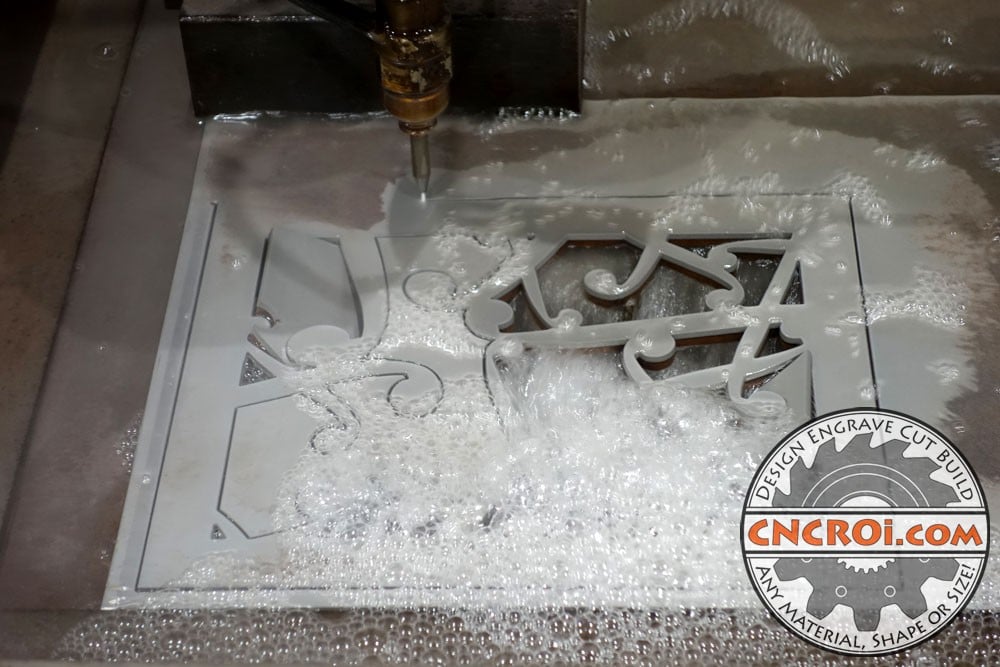
Regardless, this 12 ga stainless steel is also pretty strong, if this was wood, you’d fall straight through it but being metal, the strength profile is amazing for the thickness of it.
When it comes to steel cutting, laser cutting also does a wonderful job at making quick work of a design.
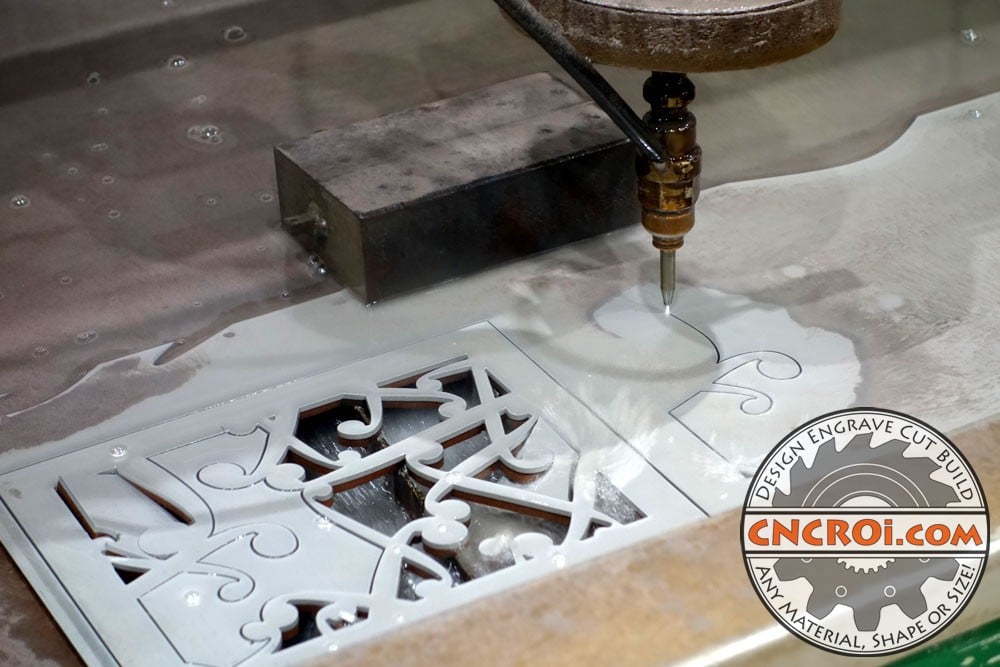
As I get more and more into welding, I look forward to showcasing what’s possible when you start mixing different CNC platforms with additional parts that can be made into larger items at CNCROi.com.
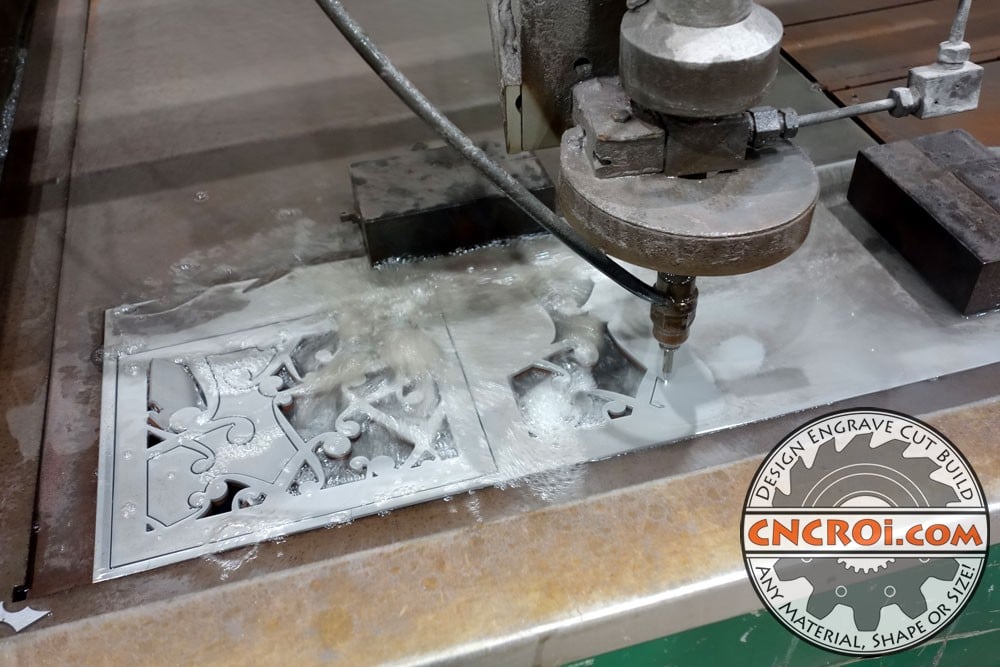
For instance, these custom metal grills are 2D right now, I could add tabs and other items to the stainless steel for a more secure fit other than just drilling holes into the top, which the customer will do on-site.
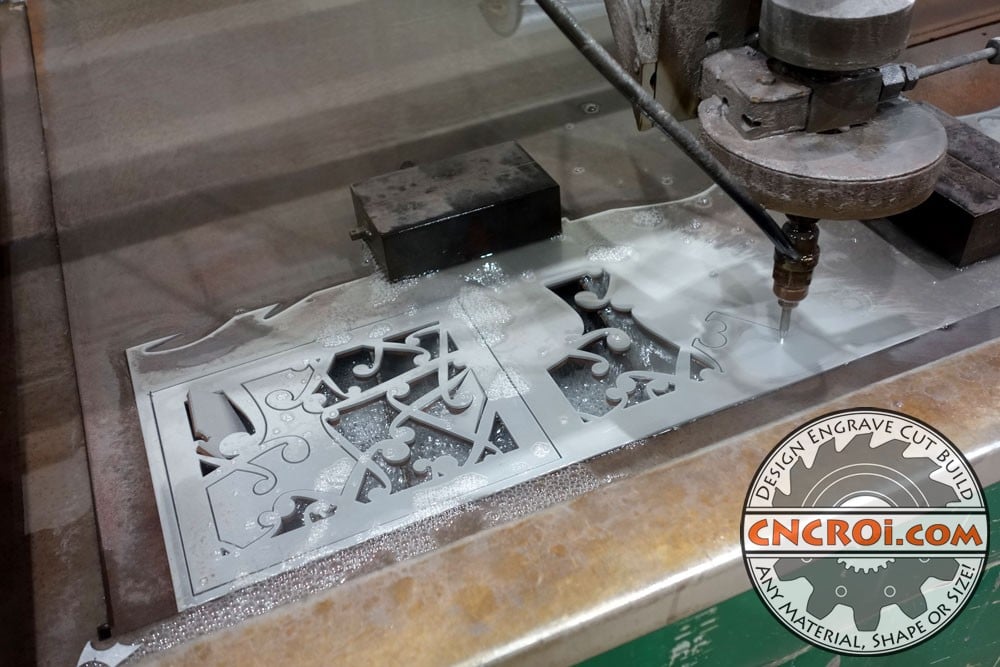
We’ve made many different types and combinations of floor registers and metal grills, here’s a project we did at CNCROi.com using both metal and wood!
For this custom metal grills project, both grills are identical, but they could have been different not only in design but dimensions and even materials – CNCROi.com offers absolute flexibility when it comes to custom fabrication services.
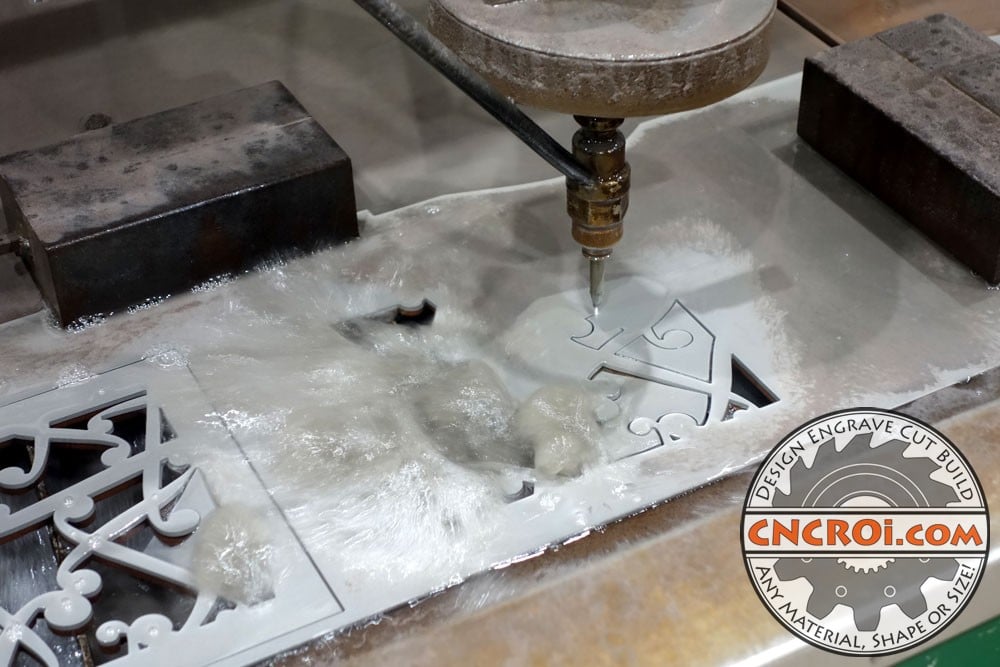
With waterjet cutting, something to keep in mind is that parts can float back up and/or flip during production, as a result, careful attention must be kept on the cutting of just about anything to make sure they don’t hit the head of the machine and drag the entire sheet over.
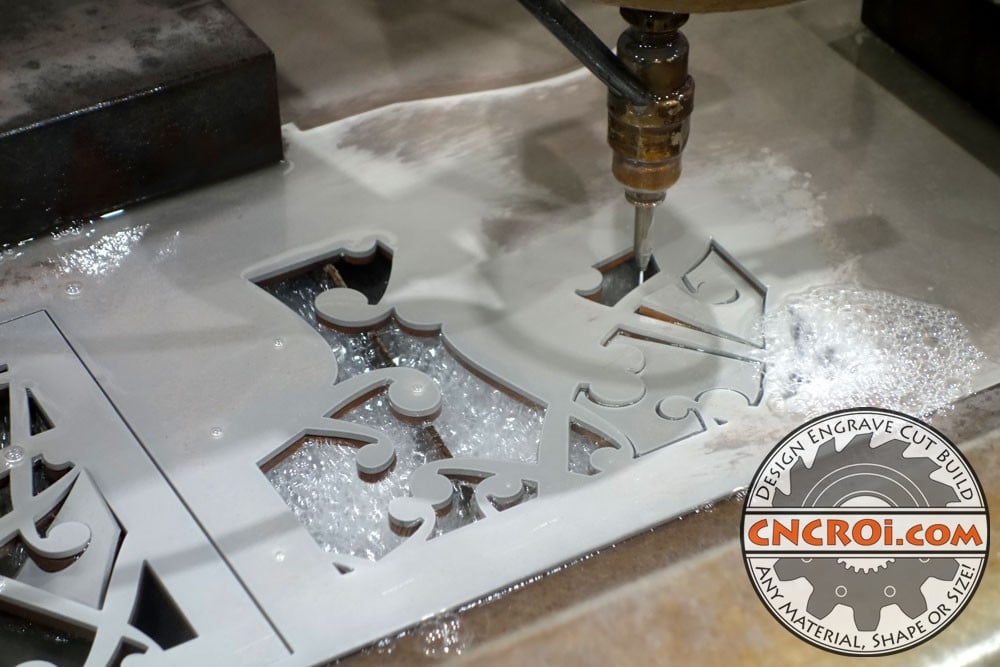
As soon as something moves in a CNC machine, it no longer can be put in exactly the same place, so the entire job has to be redone, that’s why for these custom metal grills, I cut one at a time so worse comes to worse, only one would need to be remade if anything caught onto the head of the waterjet.
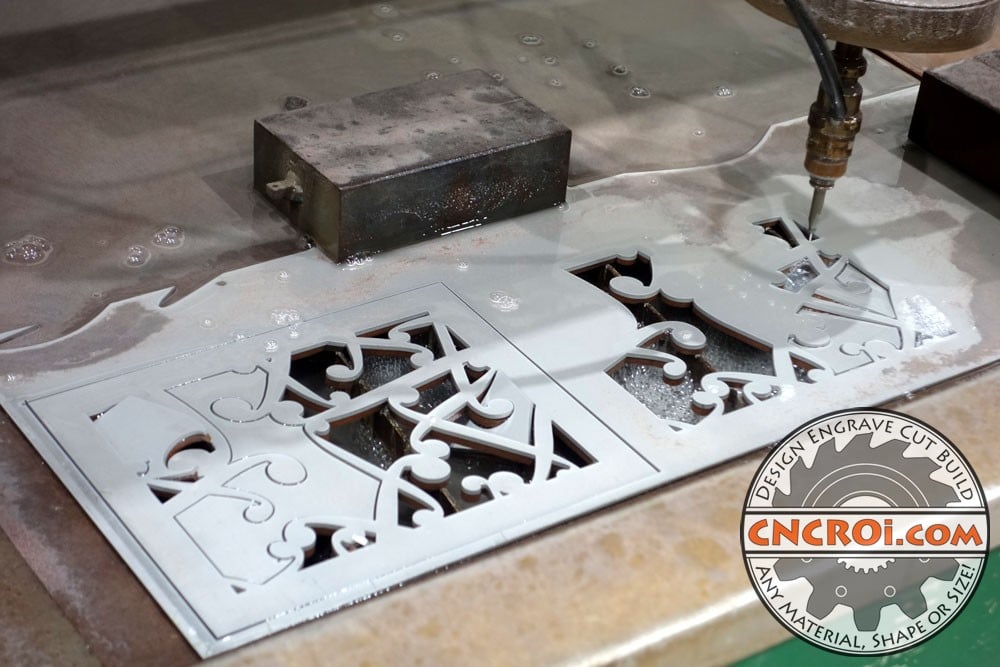
Parts flipping or floating up especially happens with small parts because the slats can’t support the entire part that are found under the sheet of stainless steel that’s slowly becoming custom metal grills.
Just about any combination of size, material and design profile works for us to fabricate exactly what you need.
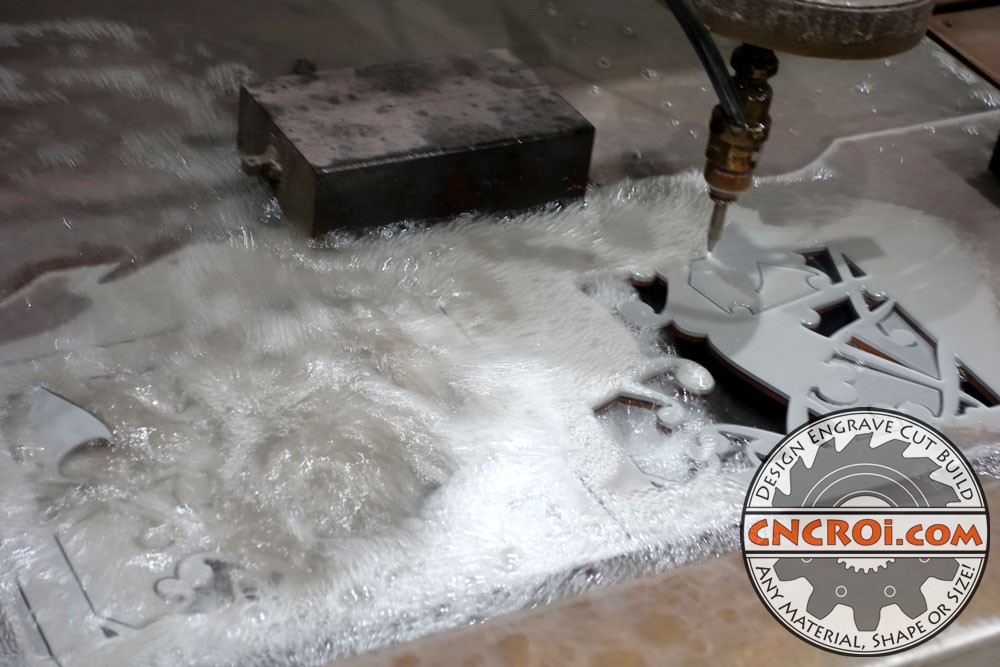
There is a lot of water with waterjet cutting, when we plasma cut things, there’s a massive flame shooting down as the metal is melted away and with the laser, the flame is a little less as there is a lot less material instantly vaporized.
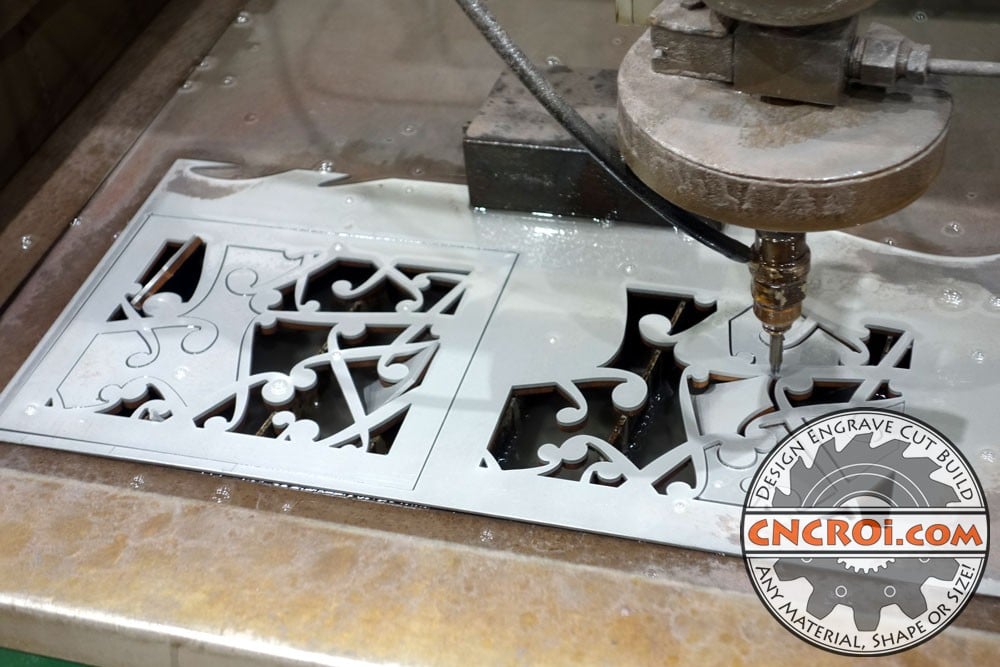
For these two custom metal grills, the customer wanted to drill their own holes to affix them to the floor on-site, that’s why we didn’t waterjet cut them out, though, if you wanted holes, CNCROi.com could have most certainly cut them out as well using the waterjet for ultimate positional accuracy.
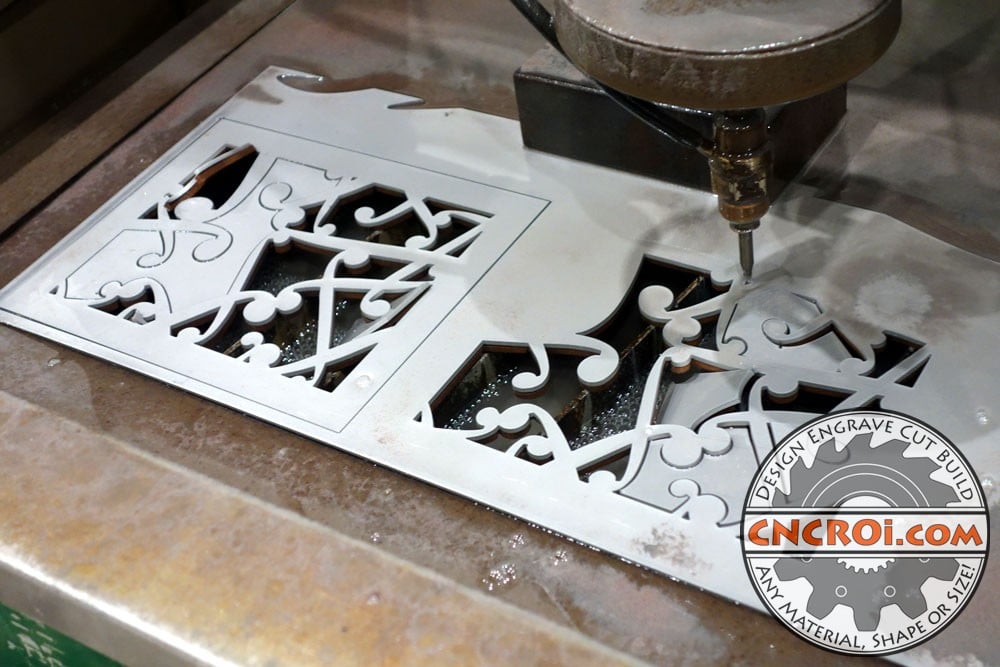
The waterjet is a great CNC platform for stainless steel due to the sanded edge quality it produces, the plasma on the other hand, produces a more rounded kerf, while the laser produces a sharp 90 degree cut with almost no kerf (angle of cutting).
Just to give you an idea of the quality that can be achieved using plasma cutting, the above video shows you a highly detailed sign we made recently at the shop.
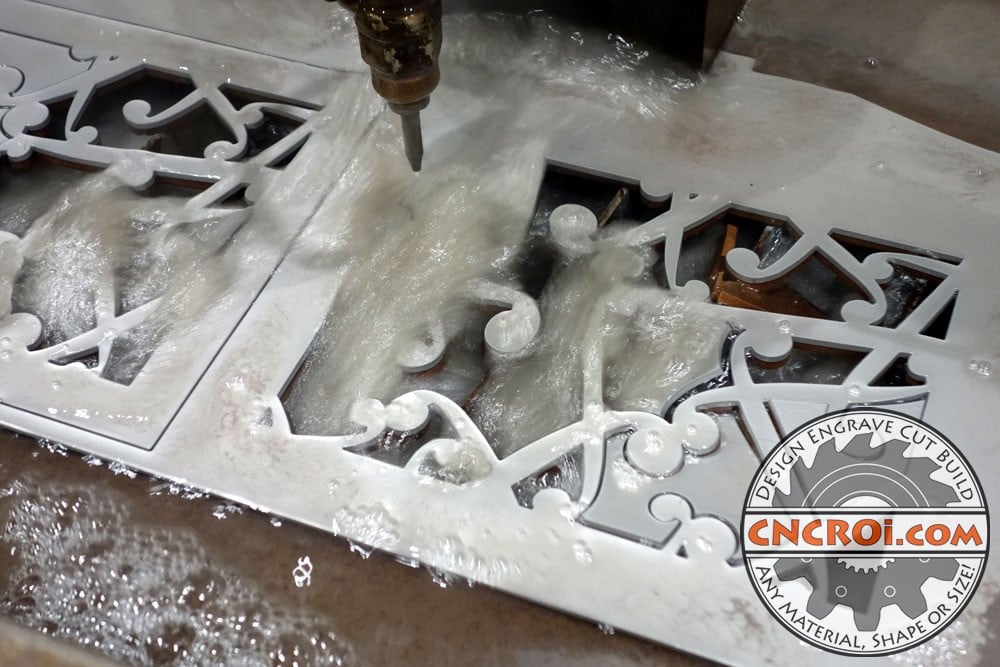
You can see some steam coming off the waterjet cutting of the stainless steel, this is typical actually, because sand + force does produce a lot of heat, but it’s quickly dissipatted with the water as it turns into vapor.
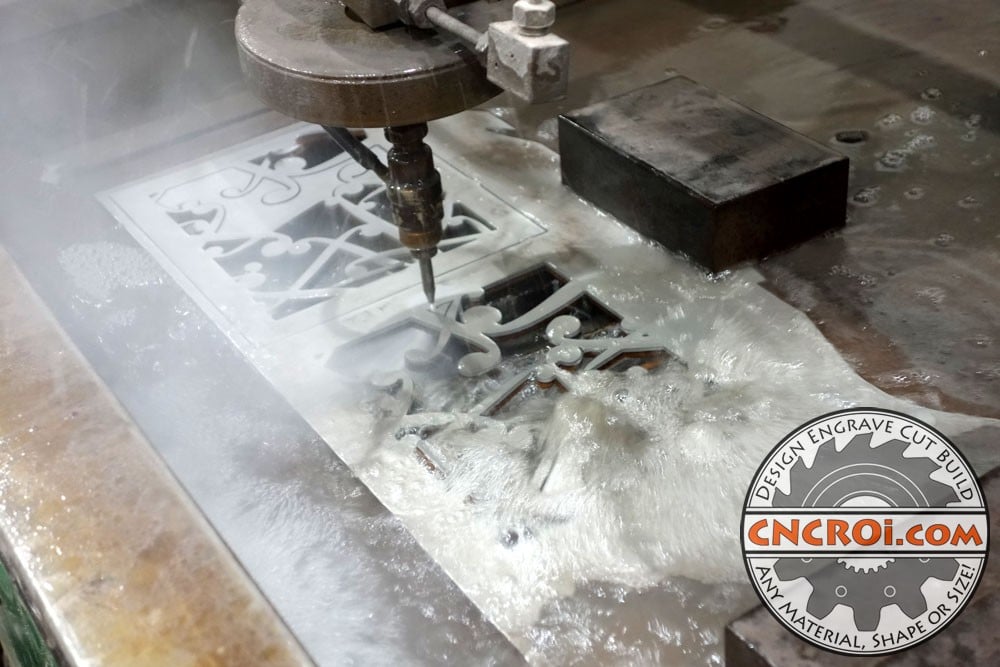
After the waterjet cutting of these custom metal grills, it’s time to wash them off and orbitally sand them clean.
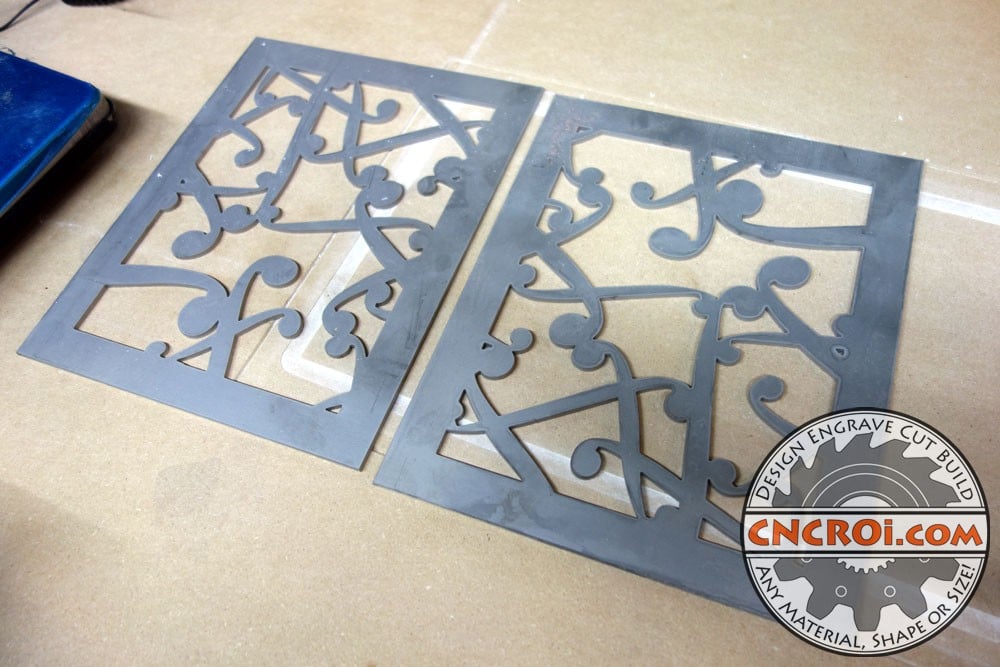
Need custom metal grills? Contact CNCROi.com right now!
